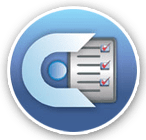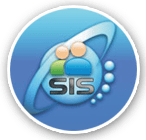I. Introduction
These tests are essential in fields such as education, research, and recruitment. However, traditional subjective assessment methods, such as manual evaluation and scoring, have significant drawbacks that can impede the evaluation process.
One of the main issues with traditional subjective assessment methods is that they are time-consuming. Evaluating large volumes of data manually can take hours, if not days, and requires a significant investment of resources. Additionally, it can be challenging to standardize evaluation criteria, leading to inconsistencies in the evaluation process and subjective bias from evaluators.
Software solutions for Subjective assessment tests can address these problems by automating the evaluation process. These solutions use algorithms and machine learning capabilities to evaluate subjective data, generating scores or rankings quickly and accurately. This automation saves time and resources while also reducing the risk of human error and subjectivity.
Moreover, software solutions for subjective assessment tests can standardize evaluation criteria and reduce the risk of evaluator bias. By using objective algorithms, these solutions can evaluate data without being influenced by personal opinions or prejudices. This helps ensure that all candidates or submissions are evaluated fairly and impartially.
II. Problems with traditional subjective assessment methods
Traditional subjective assessment methods, such as manual evaluation and scoring, have several drawbacks that can impede the evaluation process.
Some of the problems with these methods include:
• Difficulty in standardizing evaluation criteria: When evaluations are done manually, it can be challenging to ensure that all evaluators are using the same criteria to evaluate the data. This can lead to inconsistencies in the evaluation process and make it difficult to compare results.
• Time-consuming evaluation process: Manual evaluation and scoring can be a time-consuming process, especially when large volumes of data need to be evaluated. This can be a significant drain on resources, especially in fields such as education and recruitment.
• Risk of evaluator bias: Evaluators may be influenced by their personal opinions or prejudices, leading to subjective bias in the evaluation process. This can lead to unfair evaluations and compromise the validity of the results.
• Limited scalability: Traditional subjective assessment methods may not be scalable, making it difficult to evaluate large volumes of data efficiently. This can be a significant issue in fields such as education, where many students need to be evaluated.
III. How software solutions can address these problems
Software solutions for subjective assessment tests can address these problems in several ways.
Some of the ways that software solutions can help include:
• Standardizing evaluation criteria: Software solutions can standardize the evaluation criteria, ensuring that all evaluators are using the same criteria to evaluate the data. This makes it easier to compare results and ensures that all evaluations are fair and objective.
• Automating the evaluation process: Software solutions can automate the evaluation process, which can save time and resources. This is particularly beneficial when large volumes of data need to be evaluated, as it can be done quickly and efficiently.
• Reducing evaluator bias: Software solutions can use objective algorithms to evaluate data, reducing the risk of evaluator bias. This ensures that all evaluations are fair and impartial, regardless of the evaluator's personal opinions or prejudices.
• Scalability: Software solutions can be easily scaled, making it easy to evaluate large volumes of data efficiently. This is particularly beneficial in fields such as education, where many students need to be evaluated.
IV. Features of software solutions for subjective assessment tests
Software solutions for Subjective Assessment Software tests offer several features that can enhance the evaluation process and provide more accurate and objective assessments.
Here are some of the key features to look for in a software solution:
• Customizable Rubrics: The software should allow instructors to create their own rubrics or modify existing ones to suit their specific evaluation criteria.
• Automated Grading: The software should provide automated grading capabilities to reduce the time and effort required to grade assignments, essays, or other subjective assessments.
• Feedback Capabilities: The software should provide detailed feedback to students, including comments on specific areas of improvement, to help them understand their strengths and weaknesses.
• Plagiarism Detection: The software should include a plagiarism detection tool to ensure the integrity of the evaluation process and detect any instances of academic dishonesty.
• Integration with Learning Management Systems (LMS): The software should be able to integrate with existing LMS or other educational technology tools to streamline the assessment process.
• User-friendly Interface: The software should be easy to use and navigate for both instructors and students to minimize confusion and reduce the learning curve.
• Accessibility: The software should be accessible to all students, including those with disabilities, through the use of assistive technologies.
By providing these features, software solutions for subjective assessment tests can help to enhance the evaluation process, improve the quality of assessments, and reduce the workload for instructors.
V. Factors to consider when choosing a software solution for subjective assessment tests
When choosing a software solution for subjective assessment tests, there are several factors to consider.
Here are some important factors to keep in mind:
• Functionality: Consider the features that the software solution offers and whether they meet your Online assessment platform needs. Look for software that offers customizable rubrics, automated grading, plagiarism detection, and other relevant features.
• User-friendliness: Look for software that is easy to use and navigate, both for instructors and students. A user-friendly software solution will save time and reduce frustration.
• Integration: Consider whether the software solution can integrate with your current learning management system (LMS) or other educational technology tools. Integration can help to streamline the assessment process and reduce the amount of time and effort required to manage multiple tools.
• Security: Evaluate the security measures implemented by the software solution to protect sensitive student data and ensure the integrity of the evaluation process.
• Cost: Consider the cost of the software solution, including any licensing fees or subscription costs. Ensure that the cost is reasonable and fits within your budget.
• Support: Look for a software solution that provides comprehensive customer support, including online resources, user guides, and technical support. Ensure that the vendor provides timely and responsive support in case of any issues.
By considering these factors, you can select a software solution for subjective assessment tests that meets your needs, is user-friendly, and provides reliable and secure evaluations.






